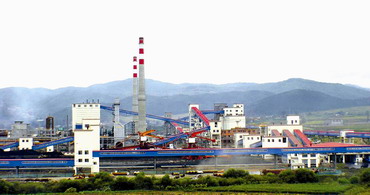 Home > News
Home > News



Wuhan, the capital city of central China’s Hubei province, is often called the Chicago of China, because of its geographical position and industry – but also because of its defiant individualistic streak.
In some ways, maybe Wuhan is more like China’s Sheffield, as it is built on massive old iron and steel industries. Wuhan Iron and Steel Corp (WISCO) is one of the biggest iron producers on the planet, among the biggest 500 firms in the world, employing 80,000 people and occupying 20sq km of the city with its factories and workshops.
But Wuhan knows needs to move away from steel. It is no longer the cheapest place to get it done, and also the EU imposed anti-dumping duties on May 13 on imports of a grade of electrical steel plate from China, Japan and Russia.
This meant duties of 28.7 per cent on imports from WISCO and others.
With a population of 10 million, Wuhan is a great example of the “new normal” that the Communist Party leadership talk about, as it tries to reinvent itself going forward in a globalised world.
When I was first here in the early 1990s, it was like a giant factory, with grimy housing and people walking the streets with dirty faces. Since then, the city has worked, like its big-shouldered counterpart in Illinois, to reinvent itself.
But nothing can prepare you for the Prada shop, which opened last month. Located in the sleek International Plaza shopping centre, the space is designed by architect Roberto Baciocchi and covers a total area of approximately 950sq m. The outside is vast – 10 metres tall and 50 metres long, all gold and steel.
Here you can snap up Prada backpacks with pistol designs, a bewildering array of purses and wallets, and all the usual ready-to-wear, leather goods, accessories and footwear collections. A polite young man follows you around the black-and-white chequered shop, with green fabric walls and polished steel much in evidence.
In some areas, the traditional industries are having to reinvent themselves. This includes working on the new Titanic, a replica being built by the Chinese firm Seven Star.
Bad taste
Considering that I am in Wuhan to cover a cruise ship disaster, this feels like bad taste, but life must go on.
The Wuchang Shipbuilding Industry Group Corporation, which is China Shipbuilding Industry Corporation (CSIC)’s shipyard in Wuhan, is building 3,200 parts for a full-scale Titanic replica at a cost of 1 billion yuan (€140 million) and the construction of the body of the ship will need about 20,000 tons of shipbuilding steel.
When it is completed, Titanic 2 will be the main draw at Seven Star’s planned theme park in Daying.
“We hope this life-size Titanic replica will bring us back to 1920s,” said Su Shaojun, CEO of Seven Star. The movie Titanic was the most popular film in China for years, until it was toppled by the Transformers movies.
Wuhan is also trying to be the Detroit of China. Already, car manufacturing represents one fifth of the city’s economy, accounting for 200,000 jobs directly, and more than a million spin-off jobs.
GM and its Chinese partner Shanghai Automotive Industry Corporation have a plant here capable of making 240,000 vehicles annually. Other big names here include Renault and Citroen, while domestic giants like Second Automotive Works are still a force with which to be reckoned.
XINSTEEL NEWS